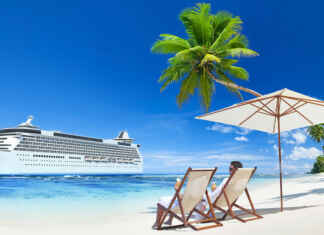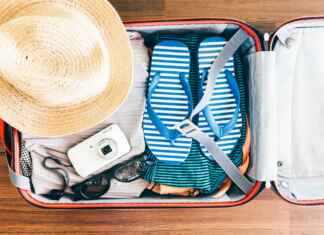In southern Asia there is Nepal a landlocked country with India & China. Nepal’s largest metropolitan city and capital is Kathmandu. Once thought to be the fabled and inaccessible Shangri-La, Kathmandu is now a hub for independent travelers as well as a growing vacation spot catering to all budgets. The city of Kathmandu is named after a structure in Durbar Square called Kasthamandap. In Sanskrit, Kastha is “wood” and Mandap is “covered shelter.”
A visit to Kathmandu can pull out your holy side, because you get to see many temples and Stupas there. Shops offer handicrafts, carpets and Nepali paper prints. Bus services, taxis and bicycles open up the city. Trek to see the Monkey Temple, the valley’s oldest and most sacred shrine. Mingle with locals and animals amid Durbar Square’s monuments and temples, or join mountain trekkers in the bustling Thamel District.
Attractions of Kathmandu
Swayambhu: It is a stupa and a big attraction for the travelers. Swayambhu is one of the most scared Buddhist sites in the country. You can reach Swayambhu by a 20-30 minutes’ walk from Thamel. The external appearance of the stupa has remained substantially unchanged since the 14th c. apart from minor alterations due to later endowments and repairs. An appreciation of the stupa is best gained by proceeding round it in a clockwise direction. As people walk round the prayer wheels fixed to the balustrade are set in motion, so multiplying the prayers a thousand times. It is also known as the Monkey Temple as there are holy monkeys living in parts of the temple.
Kathmandu Durbar Square: It is a spacious hall-temple without rival in Kathmandu. The interior of the building is open, with rows of timber supports. This site is the most popular UNESCO World Heritage Site in Nepal. Durbar Square is magical in the very early morning and evening.
Thrills & Fun
Mountain Flight: If you really want to take in the scenery and see the most renowned peaks in the Himalayan range, the Mountain Flight private plane tour is right up your alley. You are given a brochure when you board the plane so that you are able to identify the different peaks without much problem.
Tihar, Festival of Lights (Diwali): A five day festival which takes place each year on the fifteenth day of Kartika ( around the end of October/start of November) celebrated by all Hindus with ritual house-cleaning, lanterns, candles, and fireworks. The Nepali version tends to be more picturesque and less explosive (literally) than those celebrated in India. It is fun to be a part of Nepal’s Diwali.
How to reach there?
Airlines
The Tribhuvan International Airport is situated 5.56 km east of Kathmandu city is in the heart of the Kathmandu Valley. It is the largest and only airport in Nepal.
Direct from India
| Jet Airways flights | SpiceJet flights | Royal Nepal Airlines flights |
| Air India flights | IndiGo flights | |
| Kingfisher flights | JetLite flights |
Other airlines flying to Kathmandu
| Qatar Airways flights | Cathay Pacific flights | Bahrain Air flights |
| Thai Airways flights | Dragonair flights | Air Arabia flights |
| Etihad Airways flights | Gulf Air flights | PIA flights |
| Oman Air flights | China Southern flights | Air China flights |
| Biman Bangladesh Airlines flights | Singapore Airlines flights | China Eastern flights |
| United Airways Bangladesh flights | Korean Air flights | Druk Air flights |
| SilkAir flights | Saudi Arabian Airlines flights | ArkeFly flights |
| Flydubai flights | Yeti Airlines flights |
Bus
Buses are a frequent and cheap way of transport in Kathmandu, but the poor roads and delay can turn your journey into regret as they are some of the slowest and least comfortable in South Asia.
There are Five border crossings open to tourists. The Sunauli-Bhairawa border crossing is the closest to Varanasi, the Raxaul-Birganj crossing to Patna, Kolkata, and Siliguri-Kakarbhitta is to Darjeeling. The Banbassa-Mahendrenagar border crossing in the extreme west of Nepal, is the closest to Delhi.
The crossing between Nepal and Tibet via Kodari is open to independent travelers entering Nepal, but only to organized groups entering Tibet.
How to roam around?
Walk
It is possible to get around Kathmandu by foot, but it is not always a pleasant walk & you may want to consider a public transportation for anything more than wandering around a specific area.
Rickshaws
Rickshaws can be found around the tourist area of Thamel, and Taxis are everywhere. Negotiate on a price before you get in a taxi or Rickshaw. If you can’t agree, ask another driver. Prices go up after dark & in less busy areas. Taxis are easy to find; they park near all major streets & have fare-meters.
Buses
Blue buses & green buses constantly drive in circles/loops around the city on “Ring Road” – for 15 to 20rps – depending on the distance. Riding the buses with the local people can be very pleasant & interesting. The buses are typically very old and rough.
Legal cautions
Drugs are a growing problem in Nepal and the authorities are determined to tackle and control the problem. Penalties for drugs related offenses are severe. Possession of small amounts of marijuana can lead to a prison sentence in excess of five years, usually after a lengthy and expensive legal process.
Visas are available on arrival at Tribhuvan International Airport and at certain land borders. You may pay in pounds at the airport, and should bring two passport-sized photos. If you wish to stay for more than 60 days you can extend your visa up to 30 days by applying to the Nepalese Department of Immigration at Kalikasthan, Kathmandu.
You must hold a valid passport to enter Nepal. Your passport must be valid for the proposed duration of your stay. No additional period of validity beyond this is required. However, it is always sensible to have a short period of extra validity on your passport in case of any unforeseen delays to your departure.












